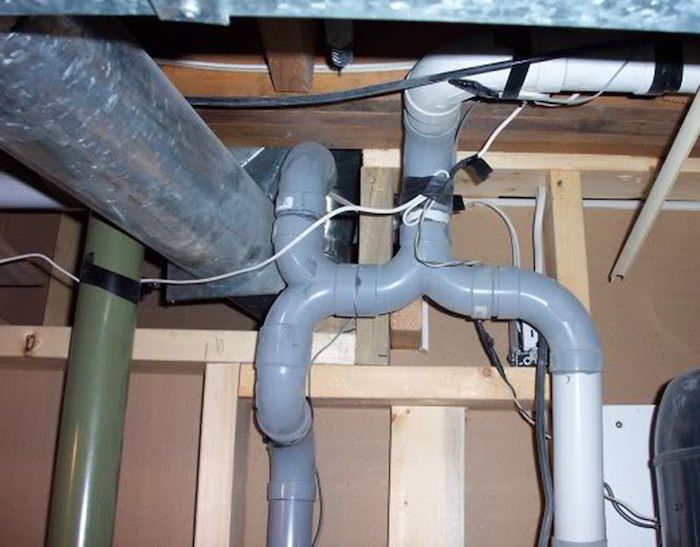How to Avoid Buying the Wrong Central Vacuum Cleaner
Brian Wasicki - owner/operator of Central Vacuum Service, LLC • Feb 14, 2022
How to Avoid Buying the Worst Central Vacuum
Let’s face it – trying to decide which is the best central vacuum unit can be a daunting task. You have a lot to choose from out there, and things can get confusing quickly, if you don’t know what you’re looking for.
With a US company like VacuMaid you know what you’re getting. Vacumaid has been around since 1956, with a good reputation and solid products. Their central vacuum units have good serviceability and support, so go with one of these.
Not to worry though. We’re here to help narrow your choices down and give you some suggestions. With this buying guide, you’ll have the expertise you need to make an informed choice, and avoid making a costly mistake. It won’t answer all of your questions, but it’ll point you in the right direction.
Follow These Rules When Buying a Central Unit
There are dozens of companies that make central vacuum units. It would take far too long to research all of them, so use these four guidelines as a shortcut. If you just want the rules without all the details, here’s a quick list for you. The next section will give you more details.
- Go With One of the US Companies
- Don’t Get Caught Up in the Numbers
- Bags Over Bagless
- Always Choose Higher Quality over Lower Initial Price
1. Go With One of the US Manufacturing Companies
This is important, huge even. A central vacuum unit is an investment in your home, so make sure to buy from a bigger company. Some of the smaller companies aren’t much more than a couple of guys in their garage. You just don’t know what kind of service to expect with them.
With a US company like VacuMaid you know what you’re getting. Vacumaid has been around since 1956, with a good reputation and solid products. Their central vacuum units have good serviceability and support, so go with one of these.
2. Don’t Get Caught Up in The Numbers
Unless you’re an engineer or a glutton for punishment, don’t pay a whole lot of attention to all the numbers. These central units have a ton of specs, but they won’t mean much to the average buyer.
The only number you really have to check out is square footage. Central units have a maximum recommended square footage they can cover, and you don’t want to buy one that’s undersized for your house. You won't have sufficient suction power if you do. Here's a pro tip: We recommend that you cut manufacturer's "up to" square footage recommendations in half. In other words, if a manufacturer says that a unit is good for "up to" 10,000 sq ft of living space, you should expect it to work very well in your 5,000 sq ft home. This is a general rule used by many central vacuum installers.
Like we said before, just double the square footage of your home and look for units that can cover it. You double it just to make sure you have enough suction for deep cleaning, even for the most remote parts of the house. Or in case you want to make additions to your home, or finish part of your basement later on.
What about Air Flow and Water Lift?
You don’t need to worry about things like air flow (CFM) and water lift, not by themselves at least. These numbers only matter because they’re used to compute something called “air watts”, which is a number that is useful when comparing central vacuum units.
Air watts measure how much cleaning power the central unit has. But for the average buyer, it’s just a good way to compare different brands.
3. Bags Over Bagless
Good maintenance is crucial to your central vacuum unit. Without it, you’ll encounter problems pretty quickly. And with some brands, improper maintenance can void your warranty. So know what you’re getting into up front. Ask yourself these questions about the units you’re interested in.
• How often do I need to empty the dirt receptacle?
• What’s involved in cleaning or replacing the filter?
• How much dirty work’s involved in maintaining the unit?
• Do I need proprietary filters and/or bags?
Bagless systems are extremely messy, and some have expensive filters which need frequent replacement, which is why we recommend Vacumaid systems with easy-to-change, disposable, multi-layered HEPA bags.
Be honest with yourself. Don’t set yourself up for failure by committing to maintenance you won’t always be able to do.
4. Always, Always, Always Go For Higher Quality over Saving a Little Money. Always.
We hope the message is clear. A vacuum system is an investment in your home and health, so be willing to spend a couple of dollars more to get a high quality power unit. We've seen "cheap" units fail in as little as 2 years, while quality units can last 10, 12, even 20 years, depending on usage.
These are high quality models, in terms of performance and serviceability both. They’re absolutely worth the extra money you pay up front. The first service call will eat up whatever you save on a cheaper model anyway.
Lastly, you’re just going to get better longevity performance and service when you buy a higher quality vacuum unit. We can’t emphasize enough how important quality is.
Get the Right Filtration System
After the motor, the filtration system is the most important part of your central unit. Broadly speaking, there’s three different types: bagged, filtered, and cyclonic units. Each type has its own set of pros and cons, which we’ll discuss below.
1. Bagged Units
Bagged units are about like they sound. They use a bag to gather debris, just like many portable vacuum cleaners do. It’s best to change the bag when it's about 1/2 - 2/3 full, otherwise you’ll begin to lose suction power and strain the motor.
Although outside venting is alway an option, one advantage of bag units is that they don’t require it — IF they have a good quality bag, that is. We use and recommend genuine Vacumaid 5 layer HEPA bags for all of the Vacumaid systems we install.
2. Filtered Units
Filtered units use a filter to protect the motor from getting clogged with dust and debris. They may or may not also use a bag, depending on the manufacturer and model. And just like a bagged unit, outside venting is not required. The downside is that the filter inevitably reduces air flow and suction power, and that can happen pretty quickly. Also, replacing and/or cleaning filers is messy and can be costly as filters can cost from $20 - $30 each.
You have to clean the filter, to ensure efficiency and better protect the motor. This is a very dirty job (take my word on that. I've done it many, many times).
In our opinion, vacuum units with removable filters that need cleaning or replacing, are not the way to go. They are extremely messy, inefficient and very expensive over time.
3. Cyclonic Units
Cyclonic units work by spinning the dust and debris around at incredibly high speeds. The heavier dirt stays in the canister, while the rest is either exhausted outside the home or sticks to a screen which needs to be cleaned. This means that outside venting is always required. There’s no filter to clean in cyclonic systems, so you’re virtually guaranteed to get 100% cleaning power, at least initially.
It’s our experience that the lack of a filter is a real drawback, even if it does give you maximum power, initially. But without a proper filter, dust and debris inevitably get into the motor over time, greatly reducing suction power. This almost guarantees many service calls down the road.
Conclusion
So there you have it – the ultimate buying guide to buying a central unit. We’ve given you the most essential information, but you can always research individual brands if you want more. With this buying guide, you’ll know exactly what to compare and how to evaluate your options. Good luck!
You might also like
Central Vacuum Service Blog

By Brian Wasicki - owner/operator of Central Vacuum Service, LLC
•
14 Jan, 2022
A good portion of the work we do is making right what others have done incorrectly, so if your current vacuum system doesn't seem to work very well, or if you are building a new home, and want to get it right the first time, give us a call.
Book a Service Today
Thank you for contacting us.
We will get back to you as soon as possible
We will get back to you as soon as possible
Oops, there was an error sending your message.
Please try again later
Please try again later
Navigation
All Rights Reserved | Central Vacuum Service, LLC™
© 2024




